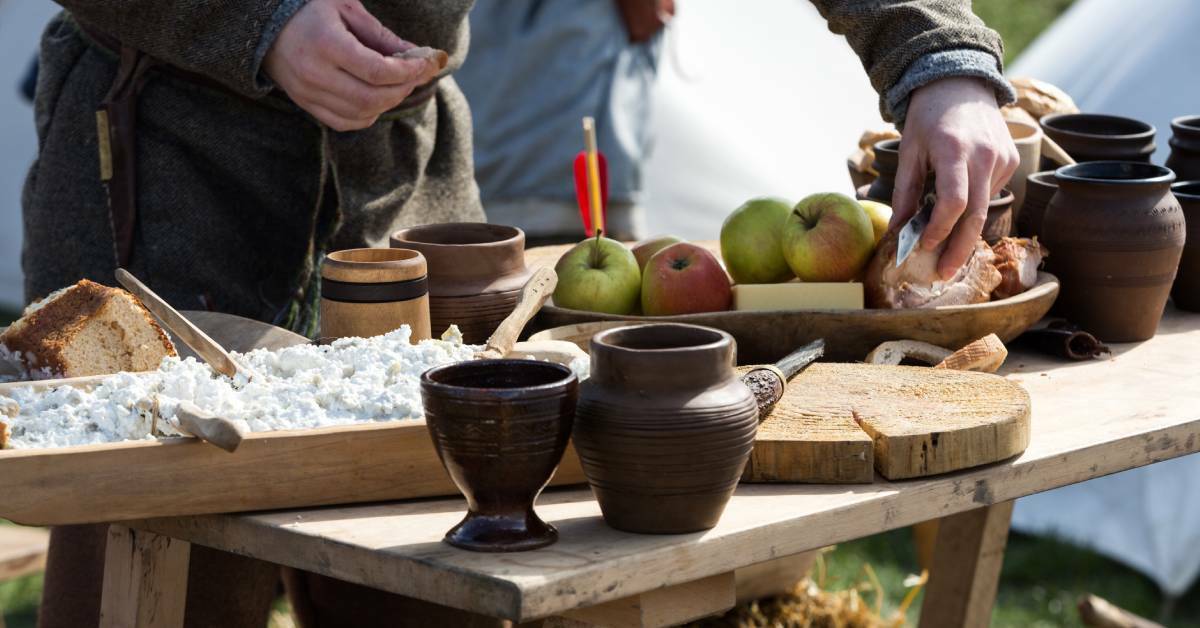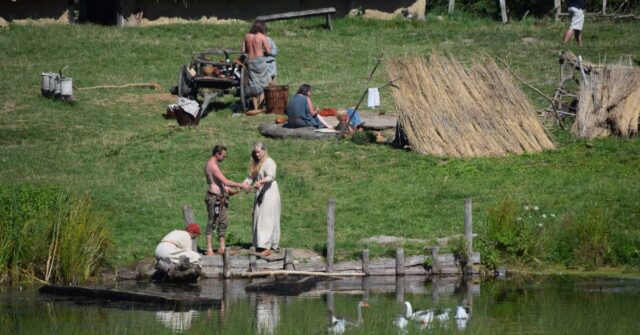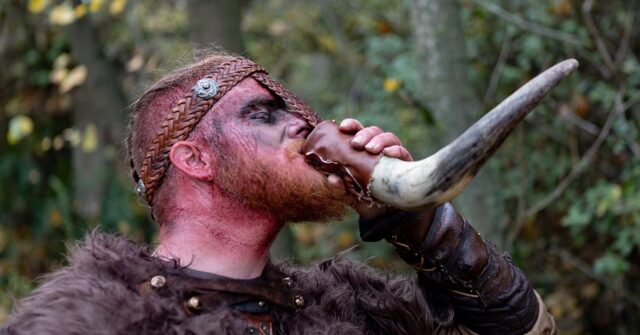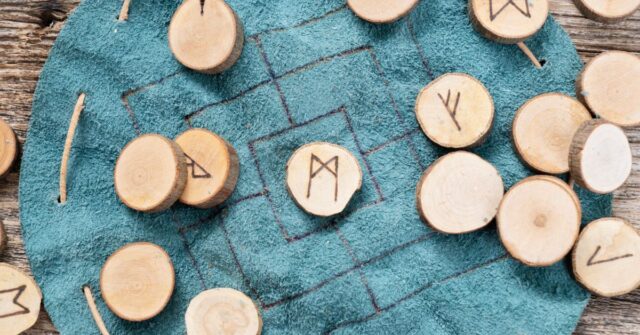The Viking Age, lasting from the late eighth to the early eleventh century, was a significant period in the history of the Scandinavian peoples.
Integral to this period were Viking feasts and celebrations, which provided not only sustenance and merriment but also formed the social and cultural fabric of Viking communities.
This article aims to take a comprehensive look at these events, exploring their rituals, foods, and entertainment activities.
The Social and Cultural Importance of Viking Feasts
Viking feasts were more than mere meals. They were significant social events that held profound cultural importance. The nuances of these celebrations help us understand the Viking world’s intricacies and the role of such gatherings in society.
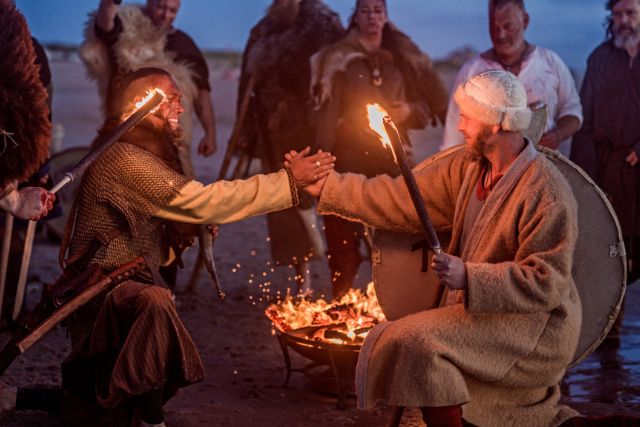
The Role of Feasts in Viking Society
Feasts played a vital role in Viking society. They were an opportunity for leaders to showcase their wealth and influence, as well as for communities to come together and strengthen bonds.
Large gatherings often marked alliances, negotiations, or the commemoration of significant events. The grandeur and spectacle of the feast reflected the host’s status and power.
Celebration as a Means of Social Cohesion
Beyond the political and economic aspects, feasts acted as essential social glue, binding the Viking community together. They allowed individuals to reaffirm social relationships, settle disputes, and exchange news and information.
These celebrations also served as venues for ritualistic activities that strengthened group identity and solidarity.
Understanding Viking Rituals
Viking rituals were diverse, involving various activities from sacred observances to seasonal celebrations. These rituals offered insights into the Vikings’ beliefs, values, and understanding of the world around them.
Sacred Observances
Sacred observances were an integral part of Viking feasts. Often held in honour of the gods, these rituals involved sacrifices, prayers, and communal meals.
Such practices helped maintain a harmonious relationship between the Vikings and the divine forces they believed influenced their lives.
Seasonal Celebrations
Vikings observed several seasonal celebrations, including the solstices and equinoxes, and holidays related to farming cycles. These feasts marked the changing seasons, celebrated the bounty of the land, and appealed for good luck in the coming months.
Marriage and Birth Rituals
Feasts celebrating marriages and births were significant occasions in Viking society. These events affirmed family alliances, and the rituals performed underscored the importance of familial roles and the continuation of the lineage.
Funerary Feasts
Viking funerary feasts were poignant affairs, serving as a final farewell to the departed. They ensured the deceased’s smooth journey to the afterlife and provided a communal space for mourning and remembrance.
The Ingredients of a Viking Feast
The variety and abundance of food at a Viking feast demonstrated the host’s wealth and hospitality. While the specific ingredients varied based on availability and season, there were common elements that characterized Viking cuisine.
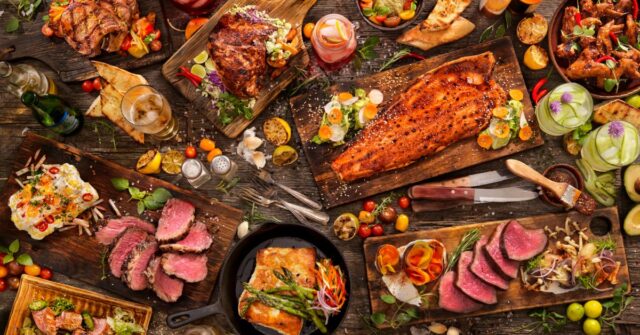
Meat and Fish
Meat and fish formed an essential part of the Viking diet. Domesticated animals like pigs, cattle, sheep, and poultry were common, as were wild game and a range of sea and freshwater fish. These foods were often smoked, dried, or salted for preservation.
Fruits, Vegetables & Grains
Despite their reputation as warriors, the Vikings were also skilled farmers. They cultivated a variety of crops, including barley, rye, oats, and peas.
Fruits such as apples, cherries, and berries were harvested from wild and cultivated trees and bushes. Root vegetables like turnips and carrots were also part of their diet.
Herbs and Spices
Herbs and spices were used in Viking cooking for flavouring and preservation. These included locally available herbs like dill, mustard, and horseradish, as well as imported spices such as black pepper and cumin, which were treasured commodities.
Alcoholic Beverages
Alcohol was an integral part of Viking feasts. Mead, a fermented beverage made from honey, was particularly popular. Beer and fruit wines were also common.
As these drinks facilitated camaraderie and merriment, they were often used in toasting rituals to honour the gods or the memory of ancestors.
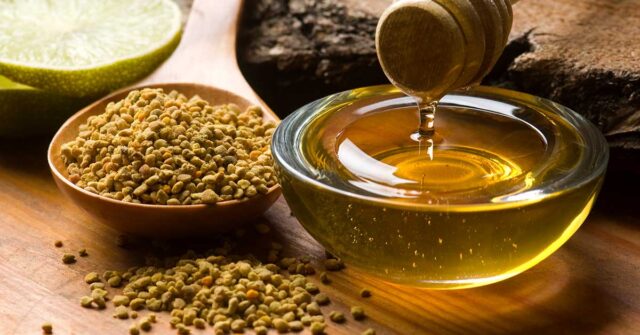
Viking Feast Preparation and Presentation
Feast preparation and presentation were elaborate affairs in the Viking world. They involved specific cooking techniques and followed certain traditions to ensure a successful event.
Cooking Techniques
Viking cooking methods were practical and varied, ranging from boiling and roasting to smoking and fermenting.
Large cuts of meat could be prepared over an open fire, while stews and porridges were made in pots or cauldrons. Baking was also common, particularly for breads and pastries.
Feast Layout and Decorations
The layout and decoration of a Viking feast reflected the status and tastes of the host. Tables were often laden with impressive displays of food, and the hall was decorated with tapestries, furs, and intricately carved wooden items.
Special seating arrangements honoured distinguished guests, reflecting the hierarchical nature of Viking society.
Viking Entertainment During Feasts
Entertainment was an essential aspect of Viking feasts, providing diversion, reinforcing social bonds, and often serving a ritualistic function. These activities ranged from music and dance to storytelling and games.
Music and Dance
Music was an integral part of Viking celebrations, with instruments such as the lyre, the lute, and various types of flutes being played. Dancing often accompanied the music, providing a lively form of entertainment that also encouraged social interaction.
Storytelling and Poetry
Storytelling and poetry held a special place in Viking society. Skalds, or poets, would regale the gathering with tales of heroism, adventure, and the exploits of the gods.
Such performances not only entertained but also served to transmit cultural values and historical knowledge.
Games and Competitions
Vikings enjoyed various games and competitions during their feasts. These included physical contests such as wrestling and horse racing, intellectual games like chess, and even mock battles.
These activities brought an element of excitement and competition to the festivities.
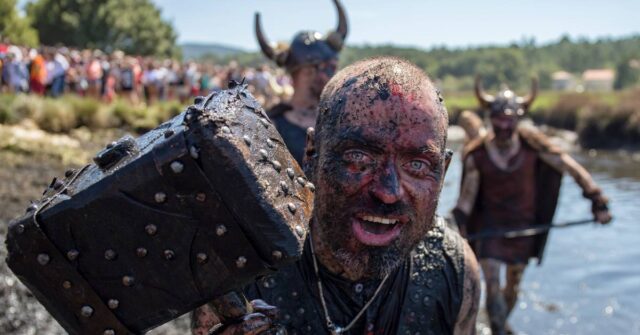
Conclusion: The Legacy of Viking Feasts and Celebrations
The traditions of Viking feasts and celebrations provide a fascinating glimpse into the Viking world. They tell us about the Vikings’ social structures, beliefs, culinary practices, and forms of entertainment.
While the Viking Age has long since passed, its influence is still felt today, particularly in modern Scandinavian cultures that continue to celebrate traditional feasts and festivals.

